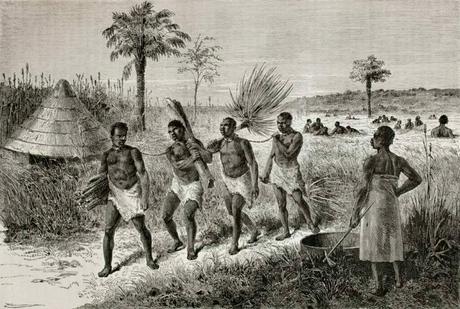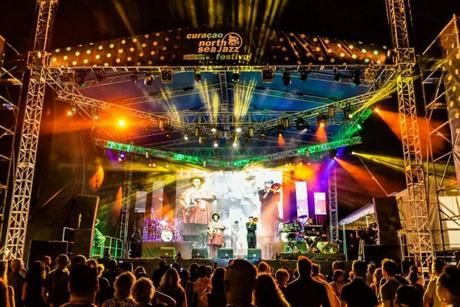Immigration has woven a vibrant tapestry of cultures in Curaçao, a captivating Caribbean island that embraces its multicultural heritage. The historical patterns of Curacao immigration, from the Atlantic slave trade to the arrival of Europeans and Sephardic communities seeking refuge, have left an indelible mark on the island’s demographics.
Today, Curaçao stands as a testament to the fusion of African, European, Indigenous, and Asian influences, with cultural expressions showcased in its music, dance, and cuisine.
However, the island’s present-day demographics are also shaped by contemporary waves of immigration, driven by political and economic factors. The influx of immigrants from neighboring countries, particularly Venezuela and the Dominican Republic, brings both opportunities and challenges for Curaçao.
While immigrants contribute to the labor force and enrich the cultural fabric, strains on social services and infrastructure require concerted efforts from the government and community organizations.
By fostering integration, promoting inclusivity, and addressing issues of discrimination, Curaçao can navigate the current demographic landscape and ensure a harmonious and prosperous future for all residents.
Historical Patterns of Immigration

Curaçao, a vibrant island nestled in the Caribbean Sea, has a rich history of immigration that has shaped its demographic landscape. Over the centuries, waves of settlers and migrants from various corners of the globe have made Curaçao their home. These historical patterns of immigration reveal a tapestry of diverse influences and cultural blending.
Initially colonized by the Dutch, Curaçao became a hub of the Atlantic slave trade. The arrival of enslaved Africans during the colonial era left an indelible mark on the island’s demographics. This forced migration resulted in a complex intermingling of African, European, and Indigenous cultures. The remnants of these diverse ancestral roots can be seen in Curaçao’s vibrant music, dance, and cuisine. Today, cultural expressions like the rhythmic beats of tumba and the energetic movements of the tambú dance bear testament to the fusion of African and European traditions.
In addition to the African diaspora, Curaçao saw immigration from Europe and the Americas during different periods of its history. The Dutch influence is evident in the architecture and language, while Jewish and Sephardic communities sought refuge on the island during times of persecution. These various waves of immigration have contributed to the rich cultural tapestry that defines present-day Curaçao.
The synagogues in Willemstad, with their historic significance and architectural splendor, stand as a reminder of the island’s Jewish heritage. Similarly, the European influence is evident in the pastel-colored colonial buildings of Punda and Otrobanda, showcasing a unique blend of Dutch and Caribbean architectural styles.
Current Demographics

Today, Curaçao’s population reflects its historical legacy of immigration. The island embraces a multicultural society, where individuals of African, European, Indigenous, and Asian descent coexist harmoniously. This cultural diversity is one of the defining features of Curaçao’s present-day demographics.
The most significant contemporary demographic shift in Curaçao is the influx of immigrants from neighboring countries, such as Venezuela and the Dominican Republic. Political and economic factors have prompted many individuals to seek better opportunities and refuge on the island. Venezuelans, in particular, have sought asylum due to the ongoing crisis in their home country. This influx has brought both opportunities and challenges for Curaçao.
On the positive side, the influx of immigrants has contributed to the island’s labor force, filling gaps in sectors such as hospitality, construction, and healthcare. It has also added to the cultural diversity, enriching the social fabric of Curaçao. However, this demographic shift has put strains on social services and infrastructure, requiring the government to address issues related to housing, education, healthcare, and employment opportunities.
To navigate the current demographic landscape, Curaçao has implemented measures to facilitate the integration of immigrants into society. Language programs and cultural orientation initiatives have been established to aid newcomers in acquiring the necessary skills and knowledge to adapt to their new surroundings. Additionally, community organizations and support networks play a crucial role in helping immigrants find their place in the local community and fostering a sense of belonging.
Social Implications

The demographic shifts in Curaçao’s population have significant social implications. The multicultural fabric of the island fosters a sense of tolerance and acceptance among its residents. The blending of different cultural traditions has created a unique Curaçaoan identity that celebrates diversity.
However, with the increasing number of immigrants, challenges arise in terms of social integration and inclusion. Language barriers and cultural differences can create barriers to communication and understanding. Efforts are being made to provide language and cultural training programs to facilitate the integration process and promote social cohesion.
Moreover, it is essential to address issues of discrimination, xenophobia, and prejudice that can arise when different cultures come together. Promoting awareness and fostering an inclusive society that values the contributions of all residents, regardless of their backgrounds, is crucial to ensure social harmony in Curaçao.
In recent years, community initiatives and events have emerged to promote intercultural dialog and appreciation. Festivals, such as the Curaçao North Sea Jazz Festival and Carnival, serve as platforms for showcasing the diverse talents and traditions of the island’s multicultural community. These celebrations not only bring people together but also foster understanding and respect among different cultural groups.
Future Trends

Looking ahead, the future of immigration in Curaçao is likely to be influenced by geopolitical and economic factors. The ongoing crisis in Venezuela and other neighboring countries may continue to drive migration to the island. This could result in further shifts in the demographic composition of Curaçao.
It is essential for policymakers and stakeholders to anticipate and address the social, economic, and infrastructural implications of immigration. By promoting inclusivity, providing support systems, and fostering cultural exchange, Curaçao can navigate the challenges and harness the benefits that immigration brings, ensuring a harmonious and prosperous future for all residents.
In conclusion, immigration has played a pivotal role in shaping Curaçao’s past, present, and future. The historical patterns of immigration, the current demographic shifts, and the social implications highlight the island’s multicultural identity and the need for continued efforts to foster integration, understanding, and respect among all residents. As Curaçao moves forward, embracing its diverse population and celebrating its multicultural heritage will be key to maintaining its unique charm as a truly welcoming destination in the Caribbean.
Economic Impact of Immigration

Immigration in Curaçao has a significant economic impact, shaping various sectors and contributing to the island’s overall economic development. By examining the economic implications of immigration, we gain valuable insights into the opportunities, challenges, and future outlook for the island’s economy.
One of the key areas where immigration plays a crucial role is the labor market. Immigrants bring diverse skill sets and expertise, filling gaps in industries such as tourism, construction, healthcare, and agriculture. This influx of human capital not only addresses labor shortages but also fosters innovation and entrepreneurial activity. Immigrant entrepreneurs often establish businesses, creating job opportunities and stimulating economic growth. The entrepreneurial spirit and contributions of immigrants have played a vital role in diversifying Curaçao’s economy.
However, immigration also presents challenges within the labor market. Increased competition for jobs can create tensions among locals and immigrants, leading to potential inequalities and discrimination. It is important for policies and programs to address these challenges, ensuring a fair and inclusive labor market that benefits both the native population and immigrants.
Beyond the labor market, immigration has broader economic implications. Immigrants contribute to local consumption, as they require housing, goods, and services. This increased demand stimulates various sectors, supporting businesses and fostering economic growth. Additionally, immigrant remittances play a role in boosting Curaçao’s economy. Money sent back to home countries by immigrants can provide a source of income and support development in their places of origin.
Cultural Integration of Immigrants

Curaçao, with its rich history of immigration, has successfully fostered cultural integration, celebrating diversity while preserving heritage. The island’s commitment to social cohesion and inclusivity has created an environment where immigrants from various backgrounds can thrive and contribute to the vibrant cultural tapestry of Curaçao.
One of the key aspects of cultural integration in Curaçao is the preservation and celebration of diverse traditions and customs. Immigrants bring with them a wealth of cultural heritage, which is embraced and valued by the local community. Through cultural exchange and interaction, Curaçao has developed a unique fusion of traditions that reflects the diverse backgrounds of its residents. From the lively rhythms of Afro-Caribbean music to the vibrant costumes and dances of Latin American communities, the island is a melting pot of cultural expressions.
To promote cultural integration, Curaçao has implemented various initiatives and programs that facilitate cross-cultural understanding and collaboration. Language classes, cultural exchange programs, and community events provide opportunities for immigrants and locals to interact, learn from each other, and forge meaningful connections. These initiatives not only foster social cohesion but also create spaces where shared experiences and stories can be shared and celebrated.
Cultural events and festivals play a significant role in fostering social cohesion and showcasing the diversity of Curaçao’s immigrant communities. Events such as the Curaçao North Sea Jazz Festival and the Carnival parade bring together people from different cultural backgrounds to celebrate music, dance, and art. These festivals serve as platforms for immigrants to share their cultural heritage, educate others, and build bridges of understanding. They also provide opportunities for the broader community to appreciate and engage with the diverse traditions that have shaped Curaçao’s cultural landscape.
FAQ

What do I need for immigration in Curaçao?
To immigrate to Curaçao, you will need to meet certain requirements. These typically include a valid passport with at least six months of validity remaining, proof of accommodation, proof of financial means to support yourself during your stay, and a return or onward ticket. Additional documentation may be required depending on your specific circumstances, such as a work permit for employment purposes. It is advisable to check the official website of the Curaçao immigration authorities or consult with the nearest embassy or consulate for detailed and up-to-date information.
Do I need a visa to enter Curaçao?
Whether you need a visa to enter Curaçao depends on your nationality. Curaçao has visa exemption agreements with many countries, allowing their citizens to enter for tourism or business purposes without a visa for a specified period. The duration of visa-free stays varies depending on the nationality. However, if you are planning to stay in Curaçao for purposes other than tourism or business, such as for employment or study, you will likely need to obtain the appropriate visa or permit beforehand. It is recommended to check the official website of the Curaçao immigration authorities or consult with the nearest embassy or consulate to determine your specific visa requirements.
How much is the visa fee for Curaçao?
The visa fees for Curaçao vary depending on the type of visa and the applicant’s nationality. The fees are subject to change, so it is important to refer to the official website of the Curaçao immigration authorities or contact the nearest embassy or consulate for the most accurate and up-to-date information regarding visa fees.

